PARALLEL AXES
There are three types of axes orientation
- Parallel
- Intersecting
- "Twisted"
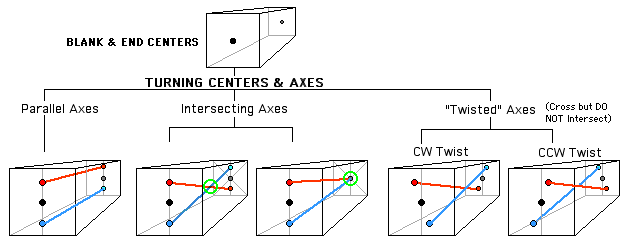
Now that you've got a feel for what we can play with when turning on multiple axes, between centers, let's get into the simplest type of multi axis turning - on PARALLEL AXES - two parallel axes specifically. And what we'll turn first (virtually) is the simplest thing to turn - a cylinder - actually two cylinders - one on each axes.
For the purposes of illustration. we'll use a RED AXIS and a RED CYLINDER on AXIS 1 and a BLUE AXIS and BLUE CYLINDER on AXIS 2. Both the BLUE and RED CYLINDERS will have the same diameter. The diameters DON'T HAVE TO BE the same - but we'll get to that next.
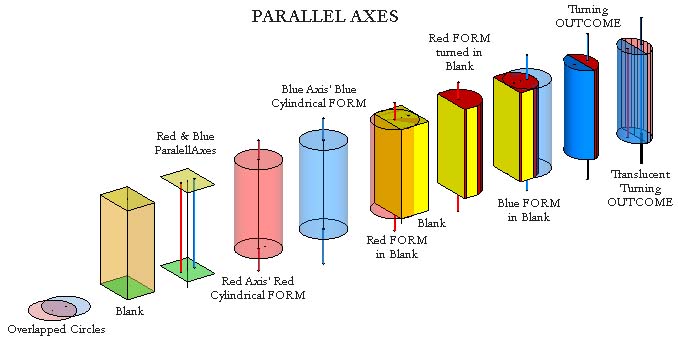
As you can see, the OUTCOME is not a cylinder but only the COMMON VOLUME of the two overlapping cylinders. The horizontal cross sections of the OUTCOME are all LENS SHAPED, the result of two intersecting ARCS. You can change the size of the COMMON VOLUME by changing the distance between the two parallel axes

.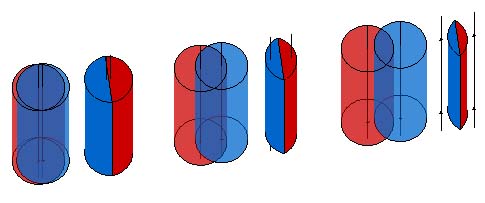
You can also change the LENS SHAPE of the OUTCOME by turning parts of CYLINDERS of two different diameters.

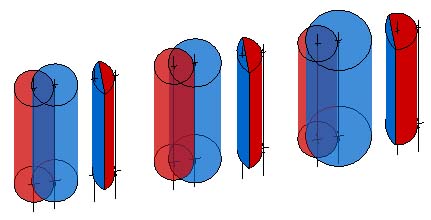
Enough of simple cylinders, Let's play with more complicated PRIMITIVES, where another Multi Axis Variable, the VERTICAL ALIGNMENT of PROFILES, comes in and affects the look of the OUTCOME.

PRIMITIVES
So let's see some examples of the affects of PRIMITIVES aligned vertically relative to each other and what happens to the resulting OUTCOME - on just two PARALLEL AXES.
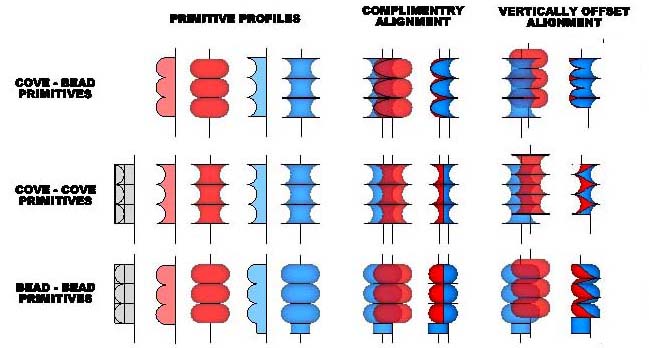
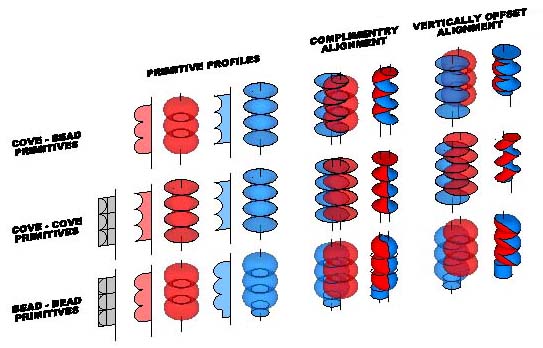
You can turn some very interesting forms using just combinations of PRIMITIVES on PARALLEL AXES. But you can also DESIGN and SCULPT on just two axes. You saw this 2 PARALLEL AXES "Maltese Falcon" earlier. The FORMS for the two axes, instead of being pure PRIMITIVES, are made up of combinations of some of the PRIMITIVES - just as you'd do if you turned two separate spindles. The result of overlappig the two FORMS outcome - at least in Side View - has a bird like look to it.
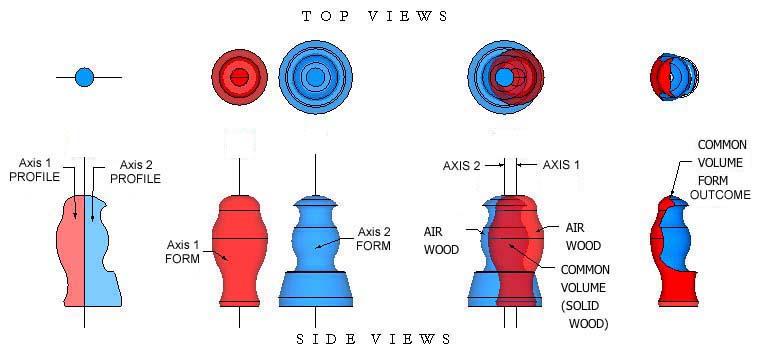

We'll be getting into how to DESIGN a multi axis piece later. (Again with the "later"?)